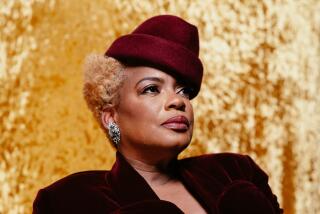Movie review: ‘Making the Boys’
- Share via
It may be hard for those who grew up watching “Will & Grace” to imagine the shock and excitement when Mart Crowley’s “The Boys in the Band” caught fire off-Broadway in 1968, becoming one of the most discussed, derided and defended dramas of its era.
A play about a group of gay men gathering for a birthday party and indulging in wicked, often self-lacerating repartee about sex, drugs and the indignities of aging doesn’t sound all that controversial. But in those days before the Stonewall riots fueled the gay liberation movement, the uncensored banter of these homosexual characters set off a groundswell.
“Making the Boys,” the absorbing documentary directed and produced by Crayton Robey, tells the story of the meteoric impact of “The Boys in the Band,” both the play and the 1970 William Friedkin film, which caused a stir of a different kind when some in the newly empowered gay community took issue with the movie’s sad-sack stereotypes of gay lives. The leap in consciousness that occurred in just a couple of years was astonishing, and the talking heads that Robey marshals — including such notable gay writers as Edward Albee, Larry Kramer, Tony Kushner and Paul Rudnick — convey what made Crowley’s work almost simultaneously a groundbreaking landmark and a period piece.
The documentary paints a vivid portrait of the era in which the closet was the norm for far too many gay people. Footage of a CBS report on homosexuality shows Mike Wallace announcing that Americans consider homosexuality to be “more harmful to society than adultery, abortion or prostitution.” And as Village Voice columnist Michael Musto reminds us, “Gays were not portrayed in movies generally, unless they were horrible victims or horrible perpetrators of crimes.”
The ‘60s were indeed swinging, and Crowley, a writer-in-the-making releasing his inhibitions after a childhood spent in the small-town South, was hanging out at Roddy McDowall’s beach house in Malibu and dancing with starlets at members-only nightclubs in New York.
His friendship with Natalie Wood, struck up while he was an underling on “Splendor in the Grass,” changed the course of his life. Wood offered him a job as her assistant when he was out of work, which opened doors to the William Morris Agency and Hollywood studios. She later offered to pay for psychoanalysis when his career was floundering and his partying had dangerously accelerated, and this gift of therapy helped him find the inner resources needed to write the play that would forever change his fate.
Crowley had feared that Eugene O’Neill and Tennessee Williams had beaten him to his tragic material, but he found subject matter all his own by venturing into terrain considered off-limits for playwrights with mainstream aspirations. New York Times theater critic Clive Barnes responded enthusiastically, describing “The Boys in the Band” as “a play that takes the homosexual milieu, and the homosexual way of life, totally for granted and uses this as a valid basis of human experience.”
Curiosity seekers felt like they were getting the chance to eavesdrop on a louche if witty subculture. The subculture itself, however, wasn’t so sure it liked what it was hearing. But famished for representation, gays took what they could get, and the commercial success of “Boys” marked a cultural breakthrough, even though its comedy of manners could be a toxic brew bubbling over with internalized homophobia.
By the time the movie was released, the political situation of gays had changed radically, and many no longer had the heart to laugh at what they once found so balefully funny. Life had happily outstripped art.
In “The Celluloid Closet,” Vito Russo noted the way “the film was taken for gospel in an America populated by people who had never met a live homosexual in their entire lives.” But rather than being a scientific expedition, Russo contends that “The Boys in the Band” is best thought of as “an inner journey for countless gays,” who in moving from self-hatred to self-respect, stand in defiance of the work’s most infamous line, “You show me a happy homosexual and I’ll show you a gay corpse.”
“Making the Boys” reveals just how bound up Crowley’s play is with the history of the gay community, most heartbreakingly in the number of original company members who died from AIDS. Crowley himself is still alive, a sober 12-step-championing senior with a comfortable lifestyle thanks to another lucky break from Wood, whose husband, Robert Wagner, invited him to be a part of the television series “Hart to Hart” as writer and producer after the fanfare over his one big success eventually died down.
When younger members of the LGBT community are asked if they know “The Boys in the Band,” they respond with quizzical looks and ribald guesses. But “Making the Boys” suggests their blissful ignorance owes a debt to a work that paved the way for more varied reflections of their experience.
More to Read
The biggest entertainment stories
Get our big stories about Hollywood, film, television, music, arts, culture and more right in your inbox as soon as they publish.
You may occasionally receive promotional content from the Los Angeles Times.











